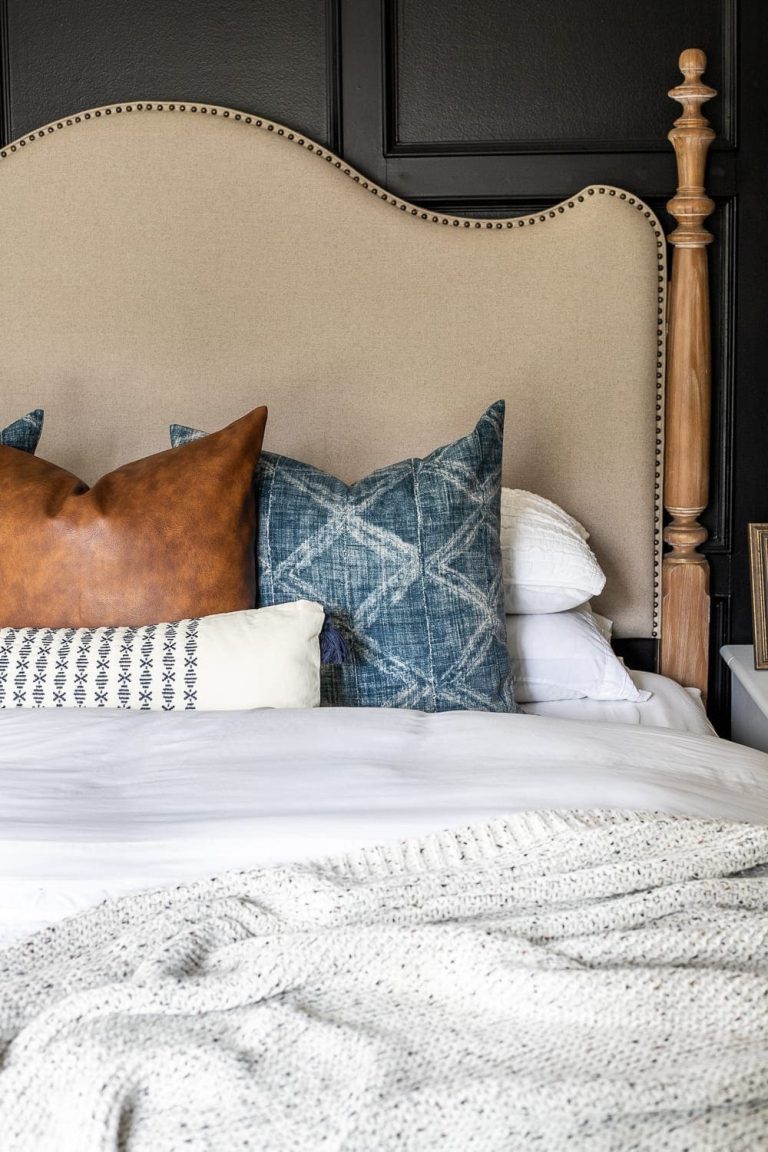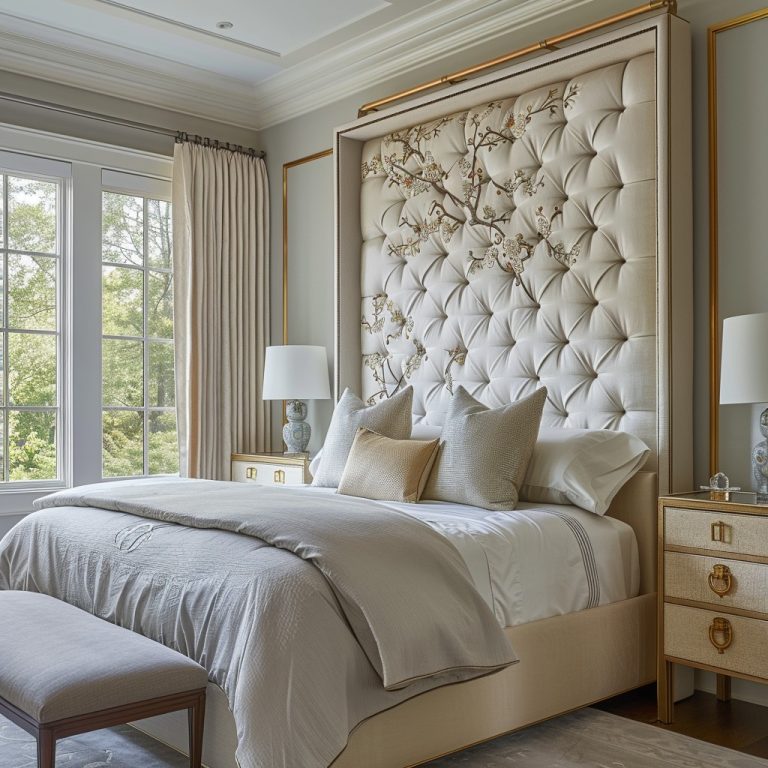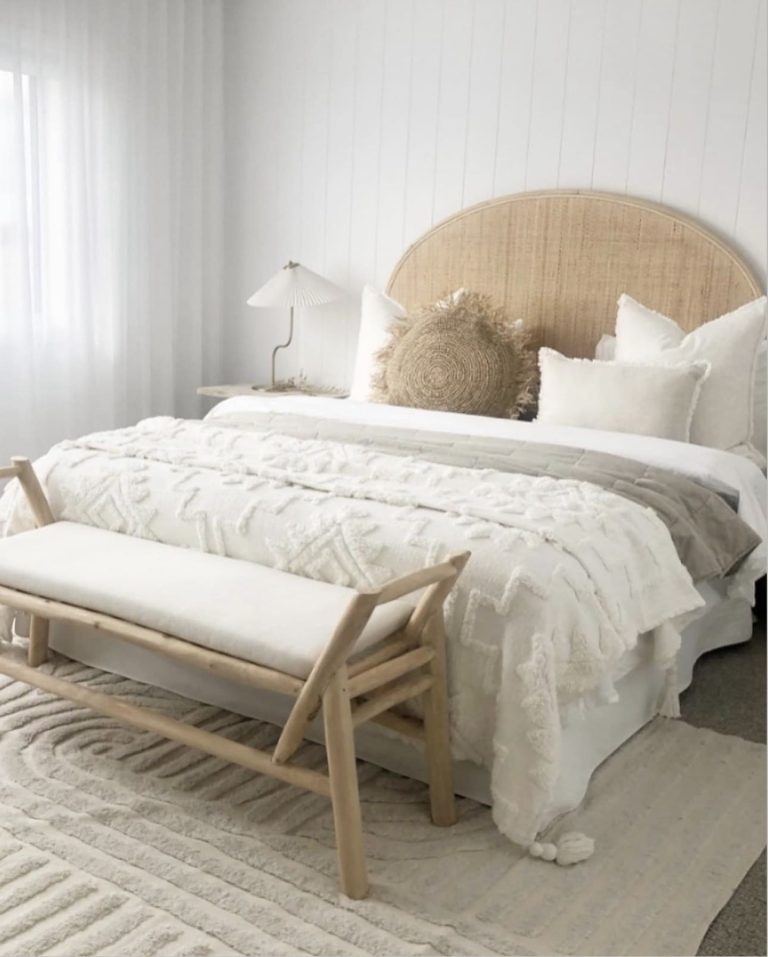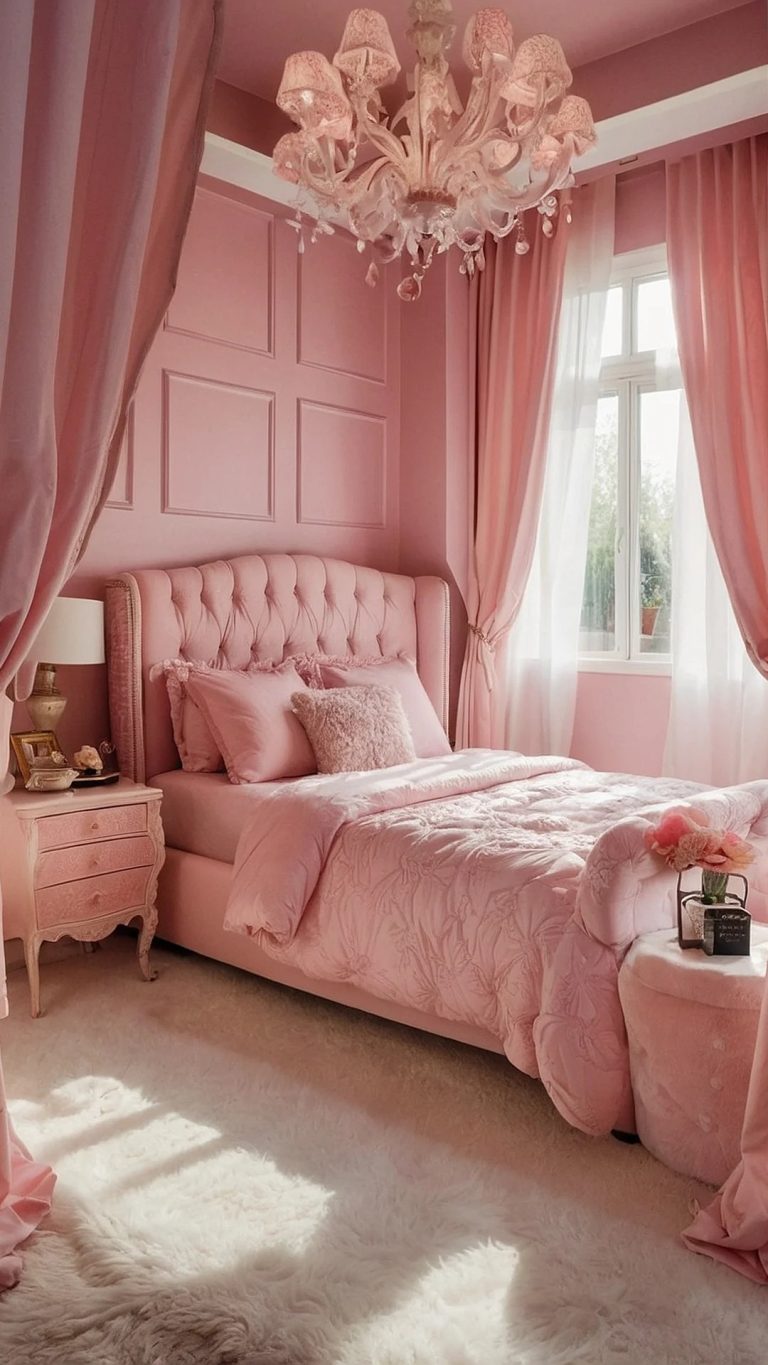9 Calming Bedroom Color Palettes For A Relaxing Nights Sleep
The correlation between the color palette of your bedroom and sleep quality is surprisingly significant. Research suggests that nearly 70% of people report being affected by their bedroom environment when it comes to sleeping well. This underscores the importance of selecting the right colors for a harmonious sleeping space. Color psychology offers valuable insights into how different hues can impact our emotions, behaviors, and physical well-being.
For instance, blue is often linked with feelings of calmness and relaxation, while red can stimulate energy. By grasping these color associations, we can create a bedroom that fosters restful sleep and tranquility. In this post, I’ll be sharing nine calming color palettes that can transform your bedroom into a serene retreat.
Whether you’re a homeowner looking to renovate or someone seeking bedroom inspiration, these soothing color schemes will guide you in creating a space that encourages a good night’s sleep.
The Power of Color in Bedroom Design

Colors play a profound role in shaping our emotional and physical well-being. Research has demonstrated that specific hues can influence our mood, emotions, and sleep patterns. The psychological effects of colors are particularly striking, with certain shades capable of lowering blood pressure and heart rate. Blue, for instance, is renowned for its calming properties, making it an ideal choice for bedrooms where relaxation and sleep preparation are paramount.
In contrast, warmer colors like red and orange can be more stimulating, potentially hindering our ability to unwind and drift off into a restful slumber.
The impact of colors on sleep quality is also noteworthy. Exposure to blue light at night has been found to suppress melatonin production, leading to sleep disruptions.
Conversely, warmer colors like yellow, orange, and red have been linked to increased core body temperature and decreased melatonin secretion, rendering them less conducive to restful sleep.
To promote optimal sleep quality, experts recommend incorporating calming shades such as blues, greens, and grays into bedroom design. These hues create a relaxing environment that fosters better sleep.
A British Paint Manufacturers Association survey found that 76% of respondents believed blue was the most calming color for a bedroom, further emphasizing its importance in promoting restful slumber.
Serene Blue: A Touch of Tranquility
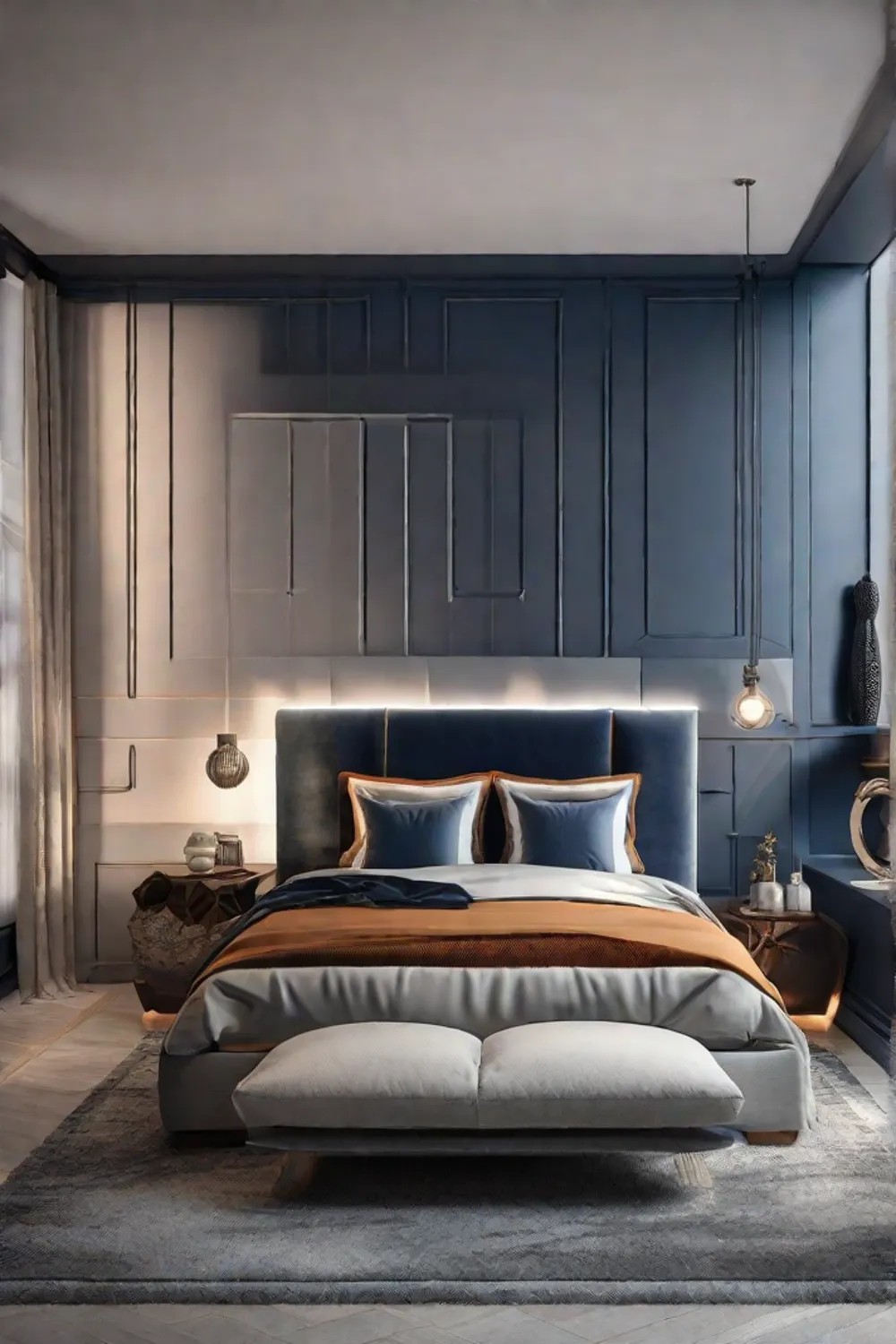
Blue’s soothing essence makes it a beloved choice for bedrooms, fostering a sense of stability and serenity that invites relaxation. The calming effects of this hue are exemplified in beach-inspired designs, where soft blues and crisp whites harmonize to evoke feelings of tranquility and calmness. By incorporating blue into your bedroom, you can effectively reduce stress levels and prepare your body for a restful night’s sleep.
To bring serenity blue into your bedroom design, consider pairing it with white or cream accents for a clean, fresh look. Alternatively, add pops of contrasting colors like gray, green, or brown to create visual interest without disrupting the calming atmosphere.
Gentle Gray: Sophisticated Calm
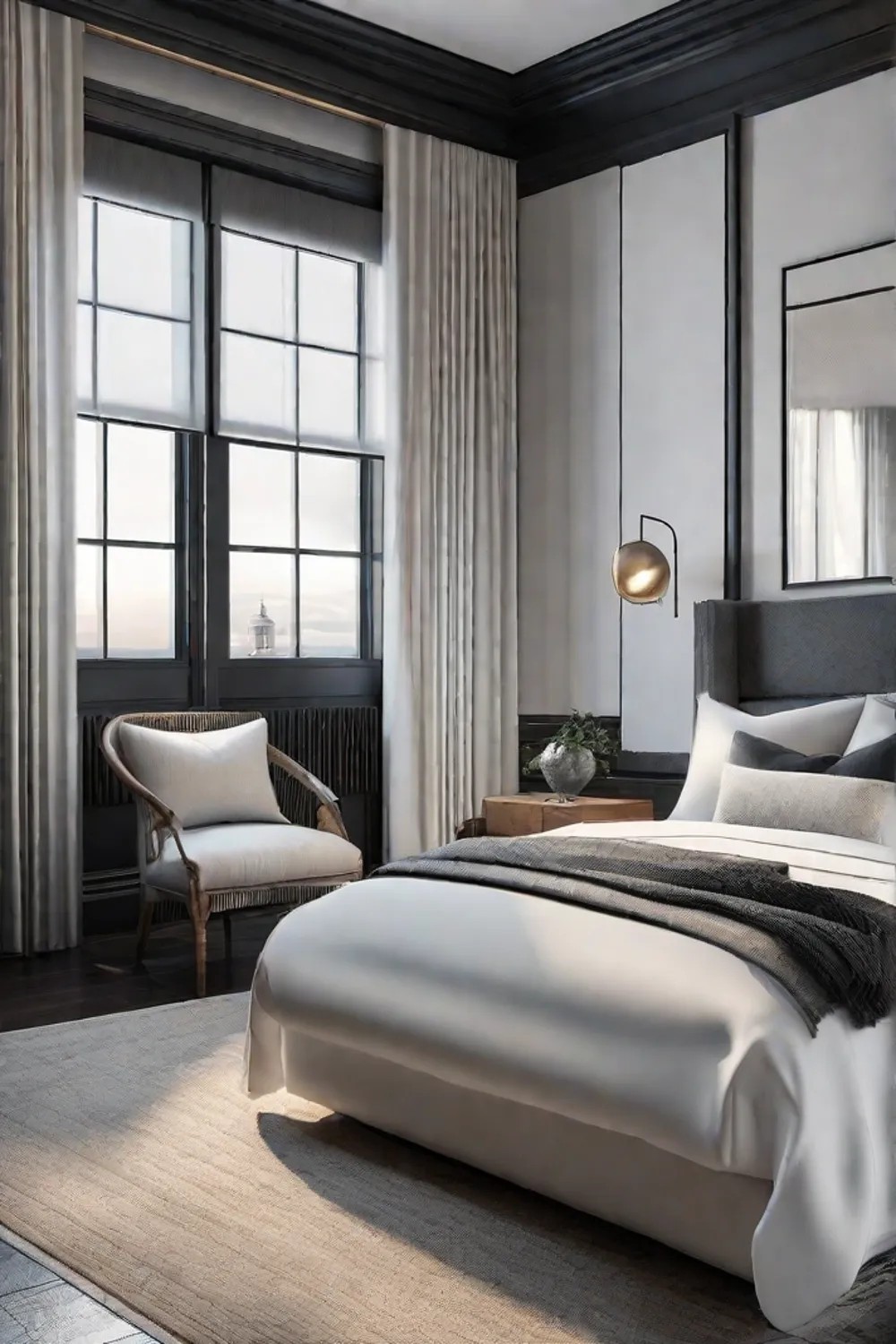
Gray’s calming essence can be harnessed to create a serene bedroom retreat. By balancing light and dark shades of this versatile color, you can achieve a sophisticated atmosphere without overwhelming the space. For instance, combining soft gray walls with deeper charcoal bedding and curtains adds depth and visual appeal. To prevent a gray bedroom from feeling flat, incorporate a variety of textures through fabrics like plush blankets, woven rugs, and smooth linen curtains.
This layering creates a cozy ambiance that invites relaxation, making it an ideal choice for a bedroom designed to promote serenity.
Soft Green: Nature’s Embrace
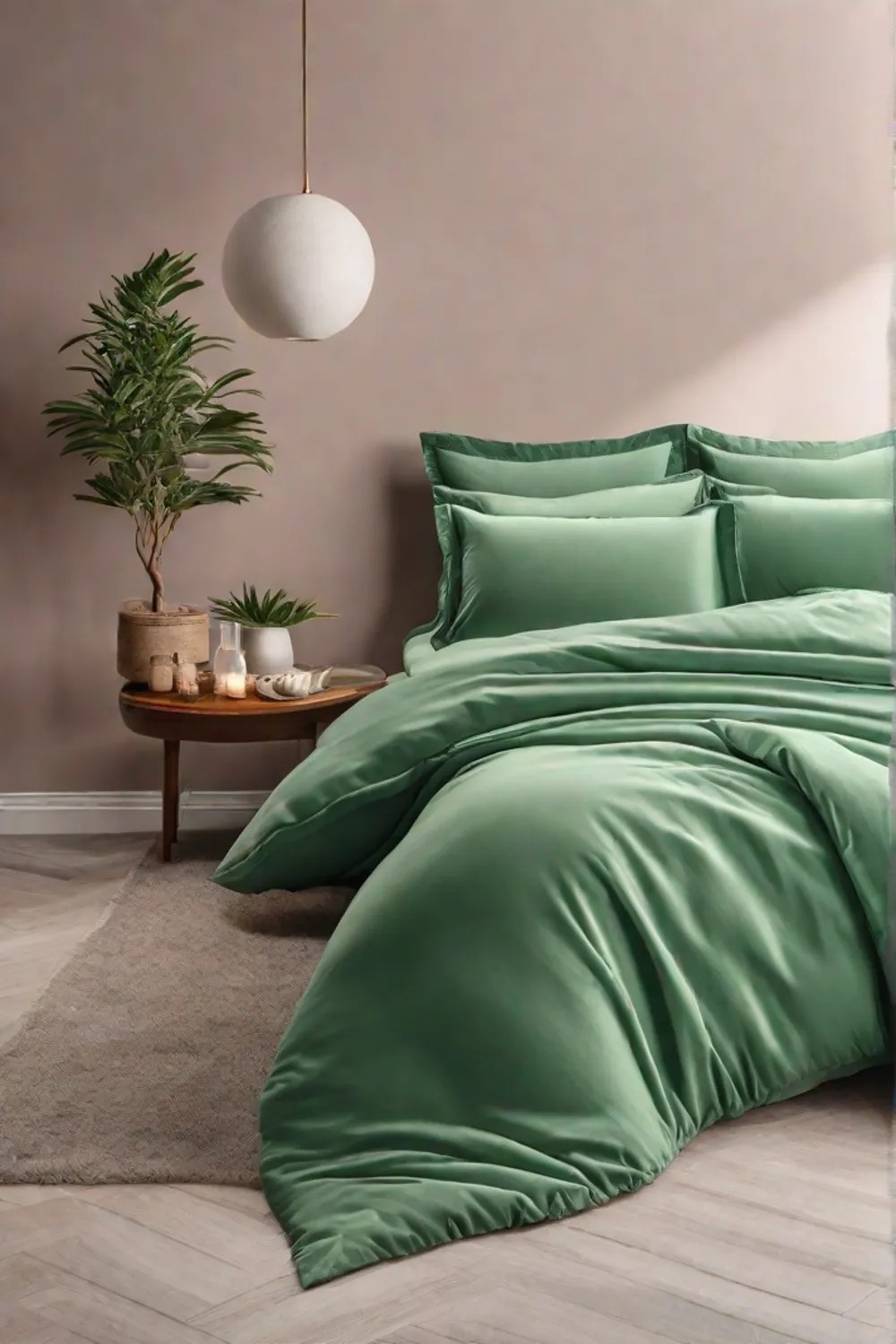
Green, often linked to nature’s renewal, is an ideal choice for crafting a calming bedroom atmosphere. The soft, muted tones of sage and olive evoke a sense of tranquility and relaxation, perfect for unwinding after a long day. To amplify this soothing ambiance, incorporate plants into your green-themed bedroom design. Low-maintenance options like snake plants, pothos, and peace lilies can thrive indoors without direct sunlight, infusing the space with freshness and vitality.
According to Dr.
Alan Hedge, an esteemed professor of ergonomics at Cornell University, the presence of plants has been shown to improve mood, reduce anxiety, and increase attentiveness. This suggests that surrounding yourself with greenery in the bedroom can have a profound impact on overall well-being and sleep quality.
Lavender Fields: A Soothing Escape

Lavender’s tranquil essence has long been prized for its ability to foster relaxation and reduce anxiety. When incorporated into the bedroom, this soothing hue creates an atmosphere conducive to unwinding and drifting off to dreamland with ease. By pairing lavender with neutral tones such as white, gray, or beige, you can achieve a harmonious balance that lets the calming properties of lavender take center stage.
For added serenity, consider introducing lavender-scented elements like pillow sprays, essential oil diffusers, or scented candles into your bedroom sanctuary. As the gentle aroma wafts through the air, it will subtly guide your mind and body towards a restful night’s slumber.
Warm Neutrals: Earthy Comfort
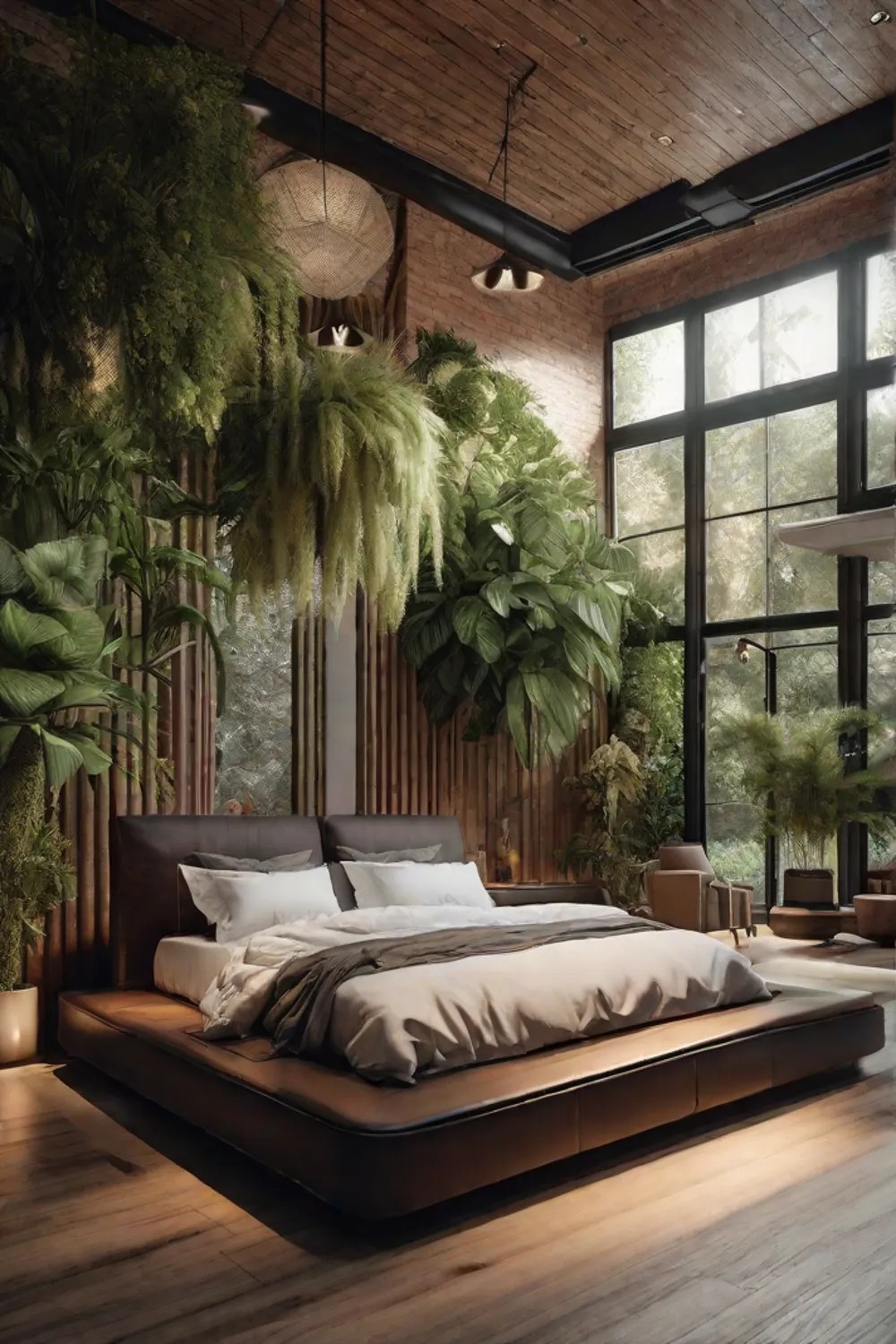
Transforming your bedroom into a serene oasis can be achieved by embracing warm neutral colors like beige and taupe. These earthy tones have a profound impact on our emotional state, fostering relaxation and sleep. By introducing these soothing hues, you’ll create an atmosphere that exudes grounding and stability, perfect for those seeking a peaceful retreat. When choosing the ideal shades of beige or taupe, it’s crucial to consider their undertones.
A cooler beige might possess subtle blue undertones, while a warmer tone will exhibit more yellow undertones. By combining these complementary shades, you’ll add depth and richness to your bedroom design. To further enhance this cozy atmosphere, incorporate an array of natural materials such as linen, cotton, wood, and rattan.
These elements will not only introduce texture and visual interest but also strike a balance between the warmth of the neutral color palette, ultimately creating a space that’s both inviting and serene.
Pastel Wonderland: Soft and Dreamy

Transform your bedroom into a serene haven by incorporating pastel colors with their gentle hues. Soft shades like pale blue, blush pink, and mint green promote calmness and tranquility, making them perfect for creating a restful sleep environment. To avoid overwhelming the space, use pastels as accents, such as throw pillows or curtains, rather than as the primary color scheme. This allows the subtle colors to shine without dominating the room.
When combining pastels with complementary patterns like stripes or floral prints, you can add visual interest and depth to the space. However, be mindful not to overdo it; a few carefully chosen patterned pieces are enough to create a harmonious and soothing atmosphere.
Deep Navy: A Bold Tranquility
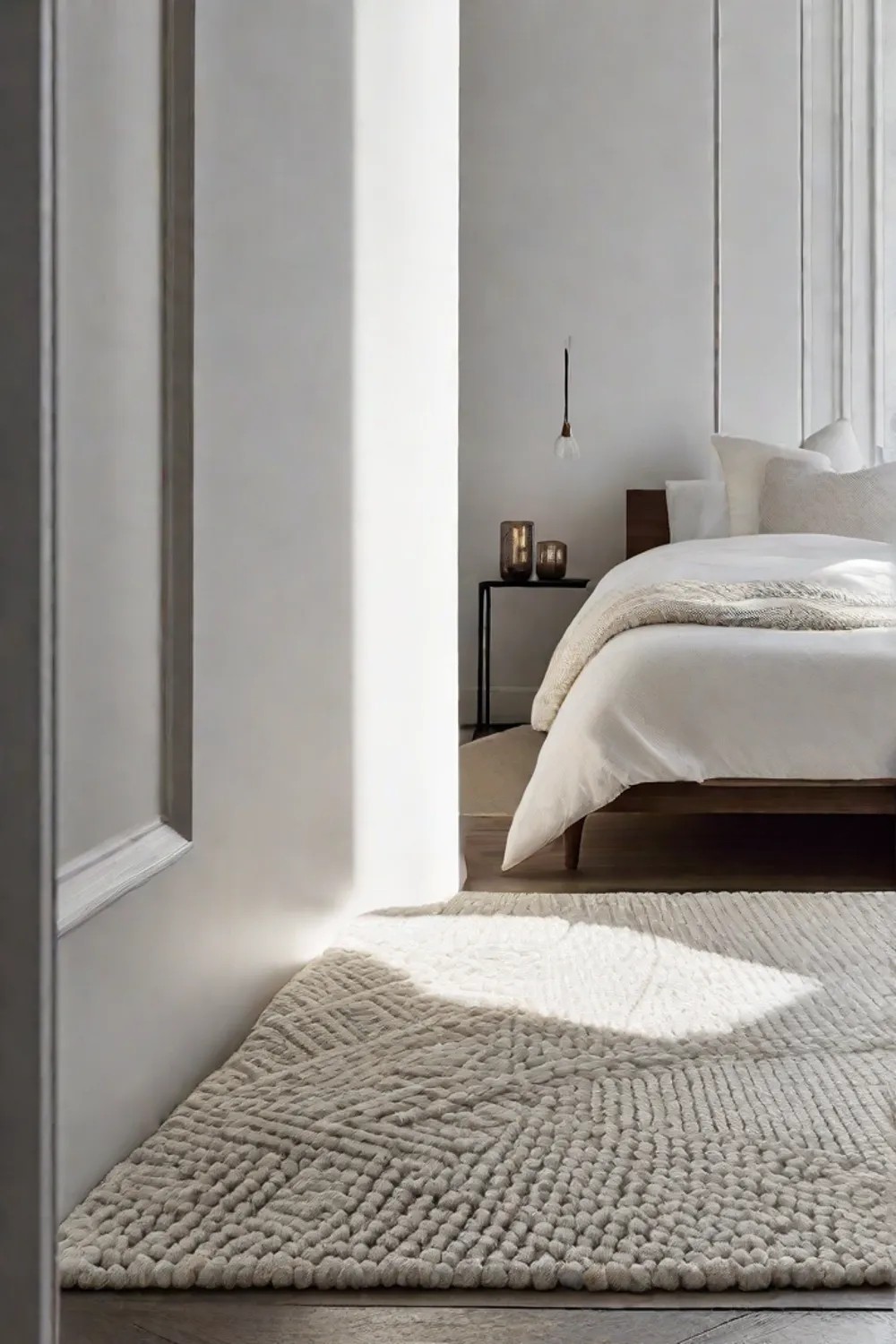
While navy blue is often associated with boldness, it can also induce feelings of serenity and tranquility when utilized as a rich, deep shade in the bedroom. This sophisticated hue strikes a harmonious balance when paired with lighter tones, creating an atmosphere that’s both luxurious and calming. To achieve this perfect harmony, consider using navy as an accent – such as in a headboard or bedding – against a backdrop of crisp white or soft gray walls.
This combination allows the navy to take center stage without overwhelming the space, resulting in a look that’s both calming and elegant. Incorporating deep navy into your bedroom design can also be achieved through wall color or decorative accents. For instance, painting an accent wall in a deep navy hue can add depth and richness to the room, while navy curtains or throw pillows complement the overall aesthetic.
By incorporating this sophisticated shade, you can create a peaceful retreat that’s both inviting and refined.
Sunset Hues: Warmth and Calm
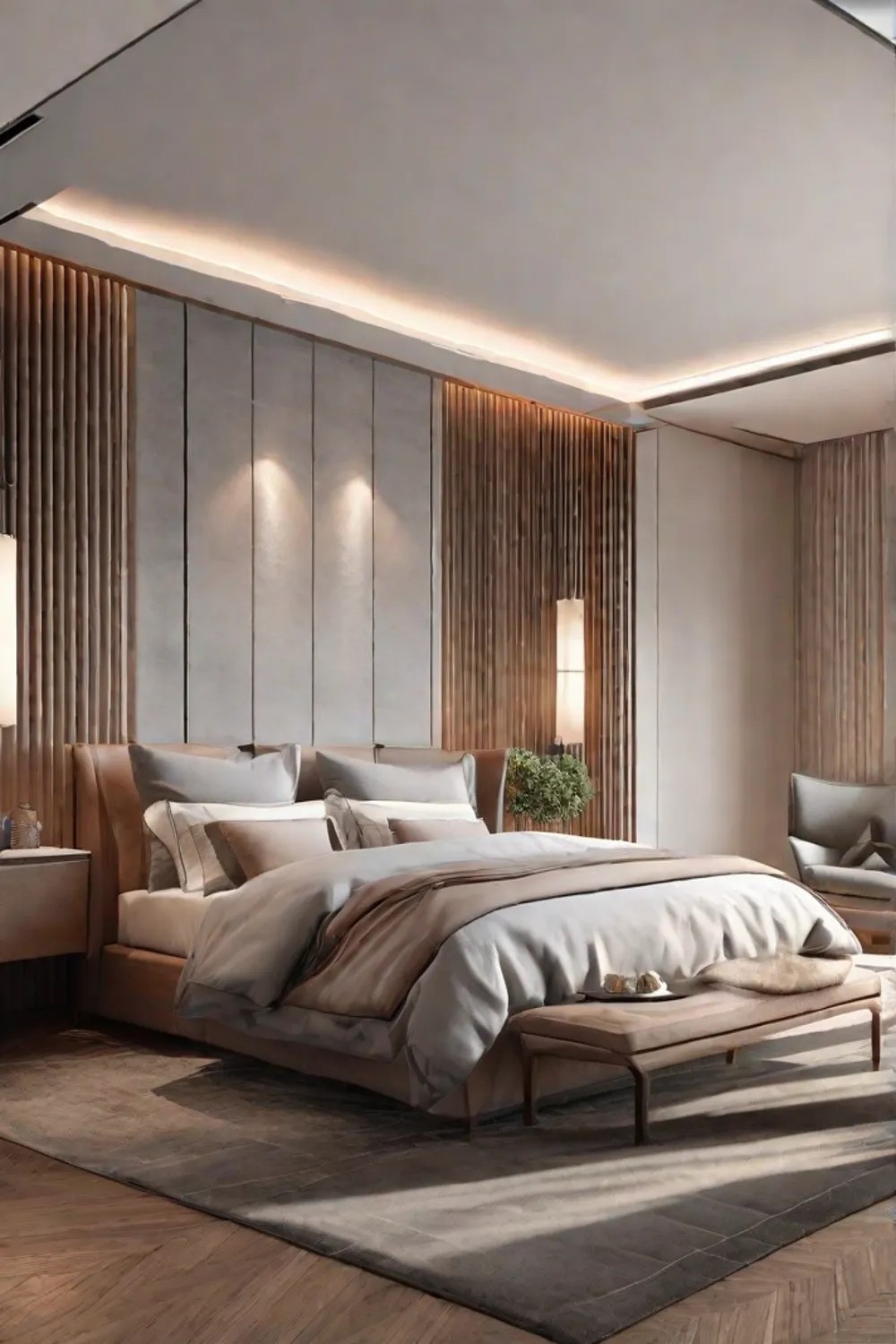
Transforming your bedroom into a serene oasis can be achieved by incorporating soft pinks, corals, and oranges – often referred to as ‘sunset hues’ – which evoke feelings of calmness and coziness. These warm colors are intricately linked with tranquility and comfort, making them an ideal choice for fostering relaxation and promoting restful sleep.
Instead of using these sunset-inspired hues as the primary color scheme, consider incorporating them as accents through throw pillows, blankets, or curtains to introduce a sense of warmth without overwhelming the space. When combining sunset hues with neutral tones such as white, gray, or beige, you can create a harmonious and soothing visual balance that complements the vibrancy of these colors.
Furthermore, using warm-toned lighting like table lamps or floor lamps with soft glow bulbs can amplify the relaxing ambiance of your sunset-inspired bedroom, creating an atmosphere that invites serenity and rejuvenation.
Minimalist White: Pure and Simple

A serene retreat awaits those who appreciate the uncluttered charm of a minimalist white bedroom. The soothing purity of white creates a tranquil atmosphere, perfect for promoting restful slumber. However, to avoid sterility or monotony, it’s crucial to inject texture and layers into the space. Soft linens, textured rugs, and natural elements like wood or plants can create a cozy ambiance without compromising the minimalist aesthetic.
To sustain this calming oasis, attention must be paid to cleanliness and organization. Regular dusting and surface maintenance, along with the use of washable fabrics, will keep the space looking fresh and well-maintained. By focusing on these details, your minimalist white bedroom will remain an inviting retreat for a restful night’s sleep.
Conclusion
Creating a peaceful retreat in the bedroom is essential for both physical and mental rejuvenation. A thoughtfully curated color palette can transport you to a serene sanctuary, perfect for unwinding after a long day. The key is to find harmonious hues that resonate with your personal taste and complement existing decor. Experimenting with different shades until you stumble upon the perfect combination is crucial.
This careful consideration will ultimately lead to a restful night’s sleep, free from distractions and stress. So, let your journey begin by exploring these nine calming bedroom color palettes, designed to envelop you in tranquility. And don’t hesitate to share your own bedroom transformations with us on social media – we’re eager to see how you’ve brought these soothing colors to life.
